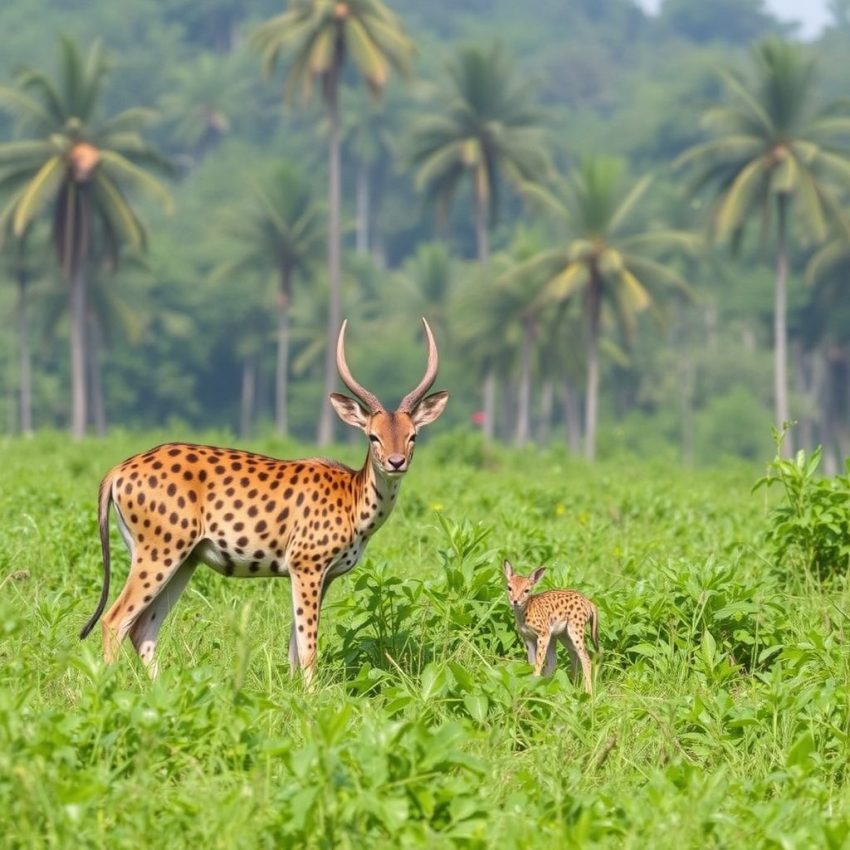Monkey Business: Sri Lanka's Wildlife Census Stirs Debate Over Crop Damage
Sri Lanka, a vibrant island nation teeming with biodiversity, is embarking on a nationwide wildlife census. While the effort to count monkeys, giant squirrels, and peacocks paints a picture of a thriving ecosystem, it also highlights a growing conflict between humans and wildlife, with farmers bearing the brunt of the damage.
The census, a vital step towards effective conservation, aims to provide accurate data on these species' populations. This information will inform strategies for managing their numbers and mitigating human-wildlife conflict, a critical issue gaining increasing attention. The focus on these particular animals stems from the escalating complaints from farmers across the country, who report significant crop losses due to these charismatic creatures.
Monkeys, known for their intelligence and adaptability, are particularly adept at raiding crops. Their large troops can decimate fields of fruits, vegetables, and grains in a short amount of time. Similarly, the vibrant giant squirrels, while a sight to behold, contribute to the problem with their appetite for fruits and nuts. Even the majestic peacocks, symbols of beauty and national pride, are not exempt from blame, as they too forage on crops, adding to the farmers' woes.
The impact of this crop damage is substantial. For many Sri Lankan farmers, agriculture is their sole livelihood, and the loss of their crops translates directly to lost income and food security. This conflict underscores the complex interplay between conservation and human needs. While protecting wildlife is crucial for maintaining ecological balance, it's equally important to address the concerns of those whose lives are directly affected by these animals.
The government's initiative to conduct this census is a positive step, acknowledging the need for data-driven solutions. However, simply counting the animals is not enough. The census must be followed by concrete action to address the issue of crop damage and provide relief to affected farmers.
Several potential solutions are being discussed, including:
- Promoting sustainable farming practices: Encouraging the use of natural deterrents, such as specific plant species that repel animals, and promoting crop diversification can minimize losses.
- Improving wildlife management: Implementing strategies to control populations in areas with high human-wildlife conflict, while ensuring the long-term survival of these species, needs careful consideration.
- Providing compensation for crop losses: Establishing a system to compensate farmers for the damage caused by wildlife could alleviate their financial burden and foster greater cooperation in conservation efforts.
- Raising awareness and promoting co-existence: Educating communities about the importance of wildlife and promoting responsible interactions can contribute to a more harmonious relationship between humans and animals.
The census of monkeys, giant squirrels, and peacocks is not just about counting animals; it’s about understanding the complexities of human-wildlife coexistence in a rapidly changing world. It's a crucial step towards finding sustainable solutions that benefit both wildlife and the communities that share their habitat. The success of these efforts will depend on the commitment of all stakeholders, including the government, conservationists, and, most importantly, the farmers themselves.
Don’t miss out on this exclusive deal, specially curated for our readers!
This page includes affiliate links. If you make a qualifying purchase through these links, I may earn a commission at no extra cost to you. For more details, please refer to the disclaimer page. disclaimer page.

